Malay language
Malay (Bahasa Melayu, Jawi: بهاس ملايو, Rencong: ) is an Austronesian language that is an official language of Brunei, Indonesia, Malaysia, and Singapore, and that is also spoken in East Timor and parts of the Philippines and Thailand. Altogether, it is spoken by 290 million people (around 260 million in Indonesia alone in its own literary standard named "Indonesian") across Maritime Southeast Asia.
As the bahasa kebangsaan or bahasa nasional ("national language") of several states, Standard Malay has various official names. In Malaysia, it is designated as either Bahasa Melayu Malaysia ("Malaysian Malay") or also Bahasa Melayu ("Malay language"). In Singapore and Brunei, it is called Bahasa Melayu ("Malay language"). In Indonesia, an autonomous normative variety called Bahasa Indonesia ("Indonesian language") is designated the bahasa persatuan/pemersatu ("unifying language" or lingua franca). However, in areas of Central to Southern Sumatra, where vernacular varieties of Malay are indigenous, Indonesians refer to the language as bahasa Melayu, and consider it to be one of their regional languages.
Malay, also called Court Malay, was the literary standard of the pre-colonial Malacca and Johor Sultanates and so the language is sometimes called Malacca, Johor or Riau Malay (or various combinations of those names) to distinguish it from the various other Malayic languages. According to Ethnologue 16, several of the Malayic varieties they currently list as separate languages, including the Orang Asli varieties of Peninsular Malay, are so closely related to standard Malay that they may prove to be dialects. There are also several Malay trade and creole languages based on a lingua franca derived from Classical Malay as well as Macassar Malay, which appears to be a mixed language.
Malay historical linguists agree on the likelihood of the Malay homeland being in Northwestern Borneo. A form known as Proto-Malay was spoken in Borneo at least by 1000 BCE and was, it has been argued, the ancestral language of all subsequent Malayic languages. Its ancestor, Proto-Malayo-Polynesian, a descendant of the Proto-Austronesian language, began to break up by at least 2000 BCE, possibly as a result of the southward expansion of Austronesian peoples into Maritime Southeast Asia from the island of Taiwan.
As the bahasa kebangsaan or bahasa nasional ("national language") of several states, Standard Malay has various official names. In Malaysia, it is designated as either Bahasa Melayu Malaysia ("Malaysian Malay") or also Bahasa Melayu ("Malay language"). In Singapore and Brunei, it is called Bahasa Melayu ("Malay language"). In Indonesia, an autonomous normative variety called Bahasa Indonesia ("Indonesian language") is designated the bahasa persatuan/pemersatu ("unifying language" or lingua franca). However, in areas of Central to Southern Sumatra, where vernacular varieties of Malay are indigenous, Indonesians refer to the language as bahasa Melayu, and consider it to be one of their regional languages.
Malay, also called Court Malay, was the literary standard of the pre-colonial Malacca and Johor Sultanates and so the language is sometimes called Malacca, Johor or Riau Malay (or various combinations of those names) to distinguish it from the various other Malayic languages. According to Ethnologue 16, several of the Malayic varieties they currently list as separate languages, including the Orang Asli varieties of Peninsular Malay, are so closely related to standard Malay that they may prove to be dialects. There are also several Malay trade and creole languages based on a lingua franca derived from Classical Malay as well as Macassar Malay, which appears to be a mixed language.
Malay historical linguists agree on the likelihood of the Malay homeland being in Northwestern Borneo. A form known as Proto-Malay was spoken in Borneo at least by 1000 BCE and was, it has been argued, the ancestral language of all subsequent Malayic languages. Its ancestor, Proto-Malayo-Polynesian, a descendant of the Proto-Austronesian language, began to break up by at least 2000 BCE, possibly as a result of the southward expansion of Austronesian peoples into Maritime Southeast Asia from the island of Taiwan.
-
Brunei
Brunei, formally Brunei Darussalam (Negara Brunei Darussalam, Jawi: , ), is a country located on the north coast of the island of Borneo in Southeast Asia. Apart from its South China Sea coast, it is completely surrounded by the Malaysian state of Sarawak. It is separated into two parts by the Sarawak district of Limbang. Brunei is the only sovereign state entirely on Borneo; the remainder of the island is divided between Malaysia and Indonesia. , its population was 460,345, of whom about 100,000 live in the capital and largest city, Bandar Seri Begawan. The government is an absolute monarchy ruled by its Sultan, entitled the Yang di-Pertuan, and implements a combination of English common law and sharia law, as well as general Islamic practices.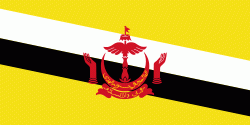
At the peak of the Bruneian Empire, Sultan Bolkiah (reigned 1485–1528) is claimed to have had control over most regions of Borneo, including modern-day Sarawak and Sabah, as well as the Sulu Archipelago off the northeast tip of Borneo, and the islands off the northwest tip of Borneo. Claims also state that they had control over Seludong (or the Kingdom of Maynila, where the modern-day Philippine capital Manila now stands) but Southeast Asian scholars believe this refers to a settlement Mount Selurong in Indonesia. The maritime state of Brunei was visited by Spain's Magellan Expedition in 1521 and fought against Spain in the 1578 Castilian War. -
Christmas Island
Christmas Island, officially the Territory of Christmas Island, is an Australian external territory comprising the island of the same name. It is located in the Indian Ocean, around 350 km south of Java and Sumatra and around 1550 km northwest of the closest point on the Australian mainland. It lies 2600 km northwest of Perth and 1327 km south of Singapore. It has an area of 135 km2.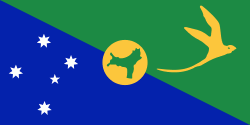
Christmas Island had a population of 1,692 residents, the majority living in settlements on the northern edge of the island. The main settlement is Flying Fish Cove. Historically, Asian Australians of Chinese, Malay, and Indian descent formed the majority of the population. Today, around two-thirds of the island's population is estimated to have Straits Chinese origin (though just 22.2% of the population declared a Chinese ancestry in 2021), with significant numbers of Malays and European Australians and smaller numbers of Straits Indians and Eurasians. Several languages are in use, including English, Malay, and various Chinese dialects. Islam and Buddhism are major religions on the island. The religion question in the Australian census is optional and 28% of the population do not declare their religious belief, if any. -
Cocos
The Cocos (Keeling) Islands (Pulu Kokos [Keeling]), officially the Territory of Cocos (Keeling) Islands ( Pulu Kokos [Keeling]), are an Australian external territory in the Indian Ocean, comprising a small archipelago approximately midway between Australia and Sri Lanka and relatively close to the Indonesian island of Sumatra. The territory's dual name (official since the islands' incorporation into Australia in 1955) reflects that the islands have historically been known as either the Cocos Islands or the Keeling Islands.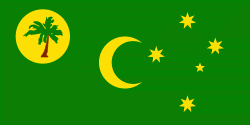
The territory consists of two atolls made up of 27 coral islands, of which only two – West Island and Home Island – are inhabited. The population of around 600 people consists mainly of Cocos Malays, who mostly practice Sunni Islam and speak a dialect of Malay as their first language. The territory is administered by the Australian federal government's Department of Infrastructure, Transport, Regional Development and Communications as an Australian external territory and together with Christmas Island (which is about 960 km to the east) forms the Australian Indian Ocean Territories administrative grouping. However, the islanders do have a degree of self-government through the local shire council. Many public services – including health, education, and policing – are provided by the state of Western Australia, and Western Australian law applies except where the federal government has determined otherwise. The territory also uses Western Australian postcodes. -
Malaysia
Malaysia is a country in Southeast Asia. The federal constitutional monarchy consists of thirteen states and three federal territories, separated by the South China Sea into two regions: Peninsular Malaysia and Borneo's East Malaysia. Peninsular Malaysia shares a land and maritime border with Thailand and maritime borders with Singapore, Vietnam, and Indonesia. East Malaysia shares land and maritime borders with Brunei and Indonesia, and a maritime border with the Philippines and Vietnam. Kuala Lumpur is the national capital, the country's largest city, and the seat of the legislative branch of the federal government. The nearby planned capital of Putrajaya is the administrative capital, which represents the seat of both the executive branch (the Cabinet, federal ministries, and agencies) and the judicial branch of the federal government. With a population of over 32 million, Malaysia is the world's 45th-most populous country. The southernmost point of continental Eurasia is in Tanjung Piai. In the tropics, Malaysia is one of 17 megadiverse countries, home to numerous endemic species.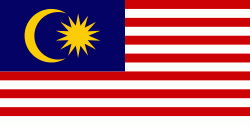
Malaysia has its origins in the Malay kingdoms, which, from the 18th century on, became subject to the British Empire, along with the British Straits Settlements protectorate. Peninsular Malaysia was unified as the Malayan Union in 1946. Malaya was restructured as the Federation of Malaya in 1948 and achieved independence on 31 August 1957. The independent Malaya united with the then British crown colonies of North Borneo, Sarawak, and Singapore on 16 September 1963 to become Malaysia. In August 1965, Singapore was expelled from the federation and became a separate independent country. -
Singapore
Singapore, officially the Republic of Singapore, is a sovereign island country and city-state in maritime Southeast Asia. It lies about one degree of latitude (137 km) north of the equator, off the southern tip of the Malay Peninsula, bordering the Strait of Malacca to the west, the Singapore Strait to the south, the South China Sea to the east, and the Straits of Johor to the north. The country's territory is composed of one main island, 63 satellite islands and islets, and one outlying islet; the combined area of these has increased by 25% since the country's independence as a result of extensive land reclamation projects. It has the third highest population density in the world. With a multicultural population and recognising the need to respect cultural identities of the major ethnic groups within the nation, Singapore has four official languages: English, Malay, Mandarin, and Tamil. English is the lingua franca and numerous public services are available only in English. Multiracialism is enshrined in the constitution and continues to shape national policies in education, housing, and politics.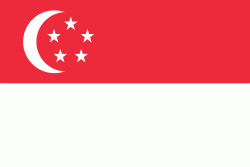
Singapore's history dates back at least a millennium, having been a maritime emporium known as Temasek and subsequently as a major constituent part of several successive thalassocratic empires. Its contemporary era began in 1819 when Stamford Raffles established Singapore as an entrepôt trading post of the British Empire. In 1867, the colonies in Southeast Asia were reorganised and Singapore came under the direct control of Britain as part of the Straits Settlements. During World War II, Singapore was occupied by Japan in 1942, and returned to British control as a separate Crown colony following Japan's surrender in 1945. Singapore gained self-governance in 1959 and in 1963 became part of the new federation of Malaysia, alongside Malaya, North Borneo, and Sarawak. Ideological differences, most notably the perceived encroachment of the egalitarian "Malaysian Malaysia" political ideology led by Lee Kuan Yew into the other constituent entities of Malaysia—at the perceived expense of the bumiputera and the policies of Ketuanan Melayu—eventually led to Singapore's expulsion from the federation two years later; Singapore became an independent sovereign country in 1965.
